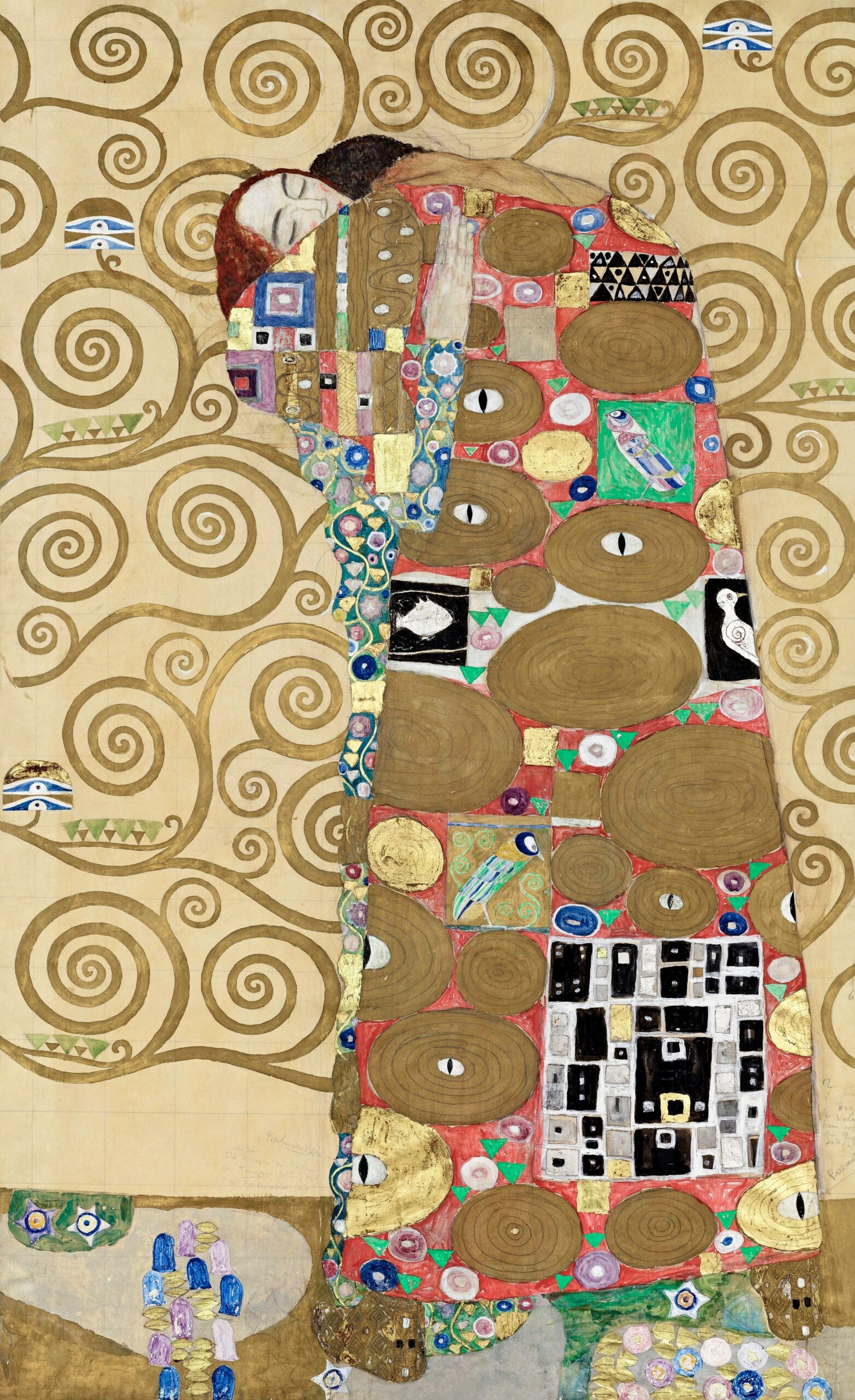Gustav Klimt – My favorite artist
Gustav Klimt: My Favorite Artist
Gustav Klimt is my favorite artist, and his works resonate deeply with me. His ability to blend intricate detail with emotional depth, his use of symbolism, and his innovative use of gold leaf make him one of the most unique and influential artists in history. Klimt’s exploration of sensuality, beauty, and the human experience is something that I find both profound and visually captivating.
Klimt is one of the most iconic artists of the late 19th and early 20th centuries, celebrated for his distinctive use of symbolism, luxurious gold leaf, and his exploration of human sensuality and emotion. A central figure in the Vienna Secession movement, Klimt’s works often blend intricate patterns with intense emotional depth, making them both visually stunning and thought-provoking.
“Art is a line around your thoughts.” – Gustav Klimt
1. Beethoven Frieze (1902)
The Beethoven Frieze is a monumental work created for the 14th Vienna Secessionist exhibition. This large mural, inspired by Beethoven’s Ninth Symphony, captures the transcendence of human suffering into joy. Klimt’s use of symbolism in the frieze is profound, with figures representing the struggles of humanity, which then lead to divine, uplifting themes of harmony and fulfillment. The use of gold and intricate patterns is typical of Klimt’s style, but here it also symbolizes the divine light that rises above human turmoil.

More
2. Sonja Knips (1898)
The portrait of Sonja Knips reflects Klimt’s ability to create elegant yet emotionally charged representations of his subjects. Sonja, a young woman from a wealthy Viennese family, is portrayed in a poised and thoughtful pose, with an exquisite, richly decorated gown. The background features intricate patterns that interact with her form, creating an almost dreamlike atmosphere. Klimt’s focus on the details of fabric, hair, and texture show his mastery of capturing both beauty and grace.

3. Fulfillment (1913–1914)
Fulfillment is one of Klimt’s later works, created as part of his work on the Faculty Paintings. The painting represents the theme of a woman in her fullest form—embracing motherhood, sensuality, and life. The dynamic and flowing lines of the figure, combined with the bright golds and deep reds, evoke a sense of energy and completeness. Klimt’s treatment of the female form is central here, expressing both beauty and power, while the overall composition suggests balance and fulfillment.

4. Pallas Athena (1898)
Pallas Athena is a painting that embodies both intellectual and physical strength. In this piece, Klimt depicts the Greek goddess of wisdom, Pallas Athena, with a regal and powerful presence. The combination of intricate patterns and gold leaf reflects the goddess’s divine nature, while her confident stance and solemn expression evoke a sense of purpose. The painting reflects Klimt’s ability to merge the symbolic with the allegorical, creating an iconic representation of feminine strength and wisdom.

5. Mada Primavesi (1912)
Mada Primavesi is a striking portrait of the young Mada Primavesi, the daughter of a wealthy Viennese industrialist. Klimt’s portrayal of her is both delicate and captivating, with the young girl’s formal, yet serene expression highlighted by the vibrant patterns and colors of her dress. The painting emphasizes the contrast between the softness of Mada’s figure and the boldness of the background, with Klimt’s characteristic use of gold adding a touch of elegance and depth.

More
Original public domain image fr The MET
Klimt’s works continue to inspire me not only for their beauty but for their depth and emotional complexity. Each painting offers a glimpse into his unique perspective on life, love, and the human condition. His art is a celebration of the intricacies of life, and it resonates with me deeply as I continue to explore and appreciate the complexity of human expression through art.
Read more:
- Claude Monet: The father of impressionism
- Gustav Klimt – My favorite artist
- Impressionism: Capturing Moments of Light and Life
- The Rennaisance: A rebirth of Art and Innovation
- Why Art and Culture Matter to Me




